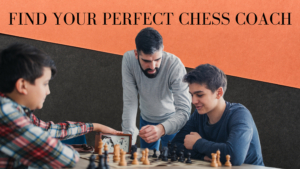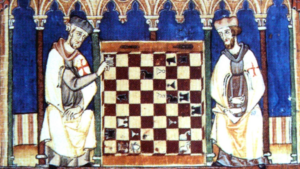The chess fever
Ever watched someone play chess and thought, “I wish I could do that”? You’re not alone. I remember staring at my grandfather’s chess set as a kid, completely mystified by those wooden pieces. Fast forward twenty years, and chess has become one of my greatest passions. Today, I’m going to share everything I wish someone had told me when I was starting out.
Setting Up Your Chess Board (The Right Way)
Here’s a pro tip most beginners miss: the bottom-right corner square should always be light-colored. I’ve seen countless games start wrong because someone flipped the board.
Think of setting up like organizing a small army:
- Back row: Your heavy hitters (rooks in corners, knights next to them, bishops beside knights, then queen on her color, king beside her)
- Front row: Your pawns are like foot soldiers, protecting the valuable pieces behind them
Remember this phrase: “Queen on her color, white on right.” It’ll save you embarrassment at chess clubs.
Understanding Your Chess Army
Let me break down each piece like they’re characters in a story:
The Pawn: Your Brave Foot Soldier
Pawns move forward one square but capture diagonally. They’re often underestimated, but here’s the secret – if a pawn reaches the opposite end, it transforms into any piece you want (except another king). I’ve won games by sneaking a pawn through enemy lines.
The Rook: Your Fortress Tower
Rooks move like tanks – straight lines, horizontal or vertical. They’re powerhouses in the endgame. Think of them as your heavy artillery.
The Bishop: Your Swift Scout
Bishops glide diagonally across the board. Each player gets one light-squared and one dark-squared bishop. They’re like specialized agents – each covering different territory.
The Knight: Your Unpredictable Warrior
Knights move in an L-shape and can jump over pieces. They’re tricky for beginners but incredibly powerful. I like to think of them as ninjas – they appear where you least expect them.
The Queen: Your Supreme Commander
The queen combines rook and bishop powers. She’s your strongest piece, but don’t throw her into battle recklessly. Losing your queen early is like losing your general.
The King: Your Precious Leader
The king moves one square in any direction. Protect him at all costs – if he falls, the game ends. Think of everything else as expendable in service of the king’s safety.
The Rules That Actually Matter
Forget memorizing every obscure rule. Focus on these essentials:
Check means your king is under attack. You must get out of check immediately. Checkmate means your king is trapped – game over. Stalemate means you have no legal moves but aren’t in check – it’s a draw.
Three Special Moves Worth Learning
- Castling: Move your king to safety while activating a rook
- En passant: A sneaky pawn capture most beginners don’t know
- Promotion: Turn your pawn into a queen (usually) when it reaches the end
Strategy That Actually Works for Beginners
Forget complicated theory. Here’s what matters:
Opening: Your First Impression
- Grab the center squares (e4, e5, d4, d5) with pawns
- Develop knights before bishops (knights are pickier about good squares)
- Castle early to protect your king
- Don’t move the same piece twice unless you have to
Middle Game: The Real Battle
Look for simple tactics. A fork attacks two pieces at once. A pin prevents a piece from moving. These basic patterns win more games than fancy strategies.
Endgame: The Final Test
When few pieces remain, your king becomes a fighter, not just a target. March him forward and support your pawns’ promotion dreams.
Best YouTube Channels for Learning Chess
For Kids and Beginners:
- ChessKid: Designed specifically for young learners with colorful animations and simple explanations
- Chess.com Beginner: Breaks down concepts into digestible chunks perfect for new players
- Saint Louis Chess Club: Offers beginner-friendly lectures that feel like having a personal coach
- Hanging Pawns: Excellent for slightly more advanced beginners who want deeper understanding
For Online Chess Learning:
- GothamChess: Levy Rozman makes chess entertaining while teaching solid fundamentals
- Chess Network: Jerry provides calm, thoughtful instruction perfect for adults learning chess
- ChessExplained: Detailed game analysis that shows you how masters think
- PowerPlayChess: Focuses on practical improvement with real game examples
Where to Play Chess Online
Chess.com remains the gold standard with millions of players, lessons, and puzzles. Lichess.org is completely free and open-source – my personal favorite for pure gameplay. Chess24 offers premium content if you’re serious about improvement.
Start with 15-minute games. Blitz chess (5 minutes or less) is fun but won’t help you learn proper thinking habits.
Mistakes I Made (So You Don’t Have To)
- Playing too fast: Take your time. Chess rewards careful thought, not quick reflexes.
- Ignoring opponent threats: Always ask, “What is my opponent trying to do?”
- Moving without purpose: Every move should improve your position somehow.
- Neglecting basic tactics: Spend 15 minutes daily solving puzzles. This alone will skyrocket your rating.
- Getting discouraged by losses: Every loss teaches you something. I learned more from defeats than victories.
Your 30-Day Chess Challenge
Want to see real improvement? Try this:
- Week 1: Master piece movements and basic rules
- Week 2: Learn simple tactics (forks, pins, skewers)
- Week 3: Practice basic openings and endgames
- Week 4: Play rated games and analyze your mistakes
The Unexpected Benefits Nobody Mentions
Chess taught me patience in ways meditation never could. It improved my concentration for work. It gave me confidence in making decisions under pressure. Most surprisingly, it connected me with people worldwide who share this passion.
Your Next Move
Don’t overthink it. Set up a board, download a chess app, or visit Chess.com. Play your first game today, even if you feel unprepared. Every grandmaster started exactly where you are now – staring at 64 squares, wondering what comes next.
The beautiful thing about chess is that it meets you where you are. Whether you’re eight or eighty, whether you play casually with friends or dream of tournament glory, chess has room for you.
So make your move. The sixty-four squares are waiting, and your chess journey starts with that first tentative pawn push. Trust me – you’ll be amazed where this ancient game can take you.






